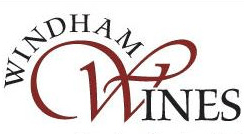
Domaine Lafage, Cote Est, Catalan, 2009
As we start to feel the first tinges of fall in the air, is there a better time to toast one of the summer’s best whites? After some of the long, hot days of this past summer, there was nothing I craved more than a refreshing glass of New Zealand Sauvignon Blanc, Oregon Pinot Gris, Muscadet, or even a cool-climate Chardonnay. However, with this year’s heat wave, by the time August rolled around another glass of NZ Sauvignon Blanc no longer had the appeal that it did 8 weeks before. Fortunately, I found a few worthy replacements and none is as exciting in terms of QPR (quality-price ratio) as the 2009 Cote Est.
This ‘vins des pays’ from the Côtes Catalanes provides so much pleasure that I remember checking my receipt after first trying it; I simply couldn’t believe it cost less than $12. It’s not very often that a wine sourced from truly old vines is as well-priced. There are no standards or regulations for labeling a wine ‘old vines’ or ‘vieilles vignes,’ which often causes confusion on the part of the consumer, and in a lot cases, the vines aren’t even that old. The oldest chardonnay vines in California were planted in 1953, for example, and they are the source for the highly rated Hanzell Vineyards Ambassador’s 1953 Chardonnay (retail: over $100). On the other hand, in the Spanish region of Rias Baixas, there are Albarino vines that are over 200 years old producing one of the world’s great dry whites (Do Ferreiro Cepas Vellas, retail: $40).
While vine age is not always indicative of quality (people often reference the legendary 1961 Bordeaux vintage in which many incredible wines were made from young vines as most of the vineyards in Pomerol and St Emilion were wiped out by a harsh winter in 1956), old vines are cherished and very sought after. They produce much less fruit than younger vines, but their fruit tends to be much more concentrated and nuanced. Which brings me back to the Cote Est, this is a wine of impressive quality and complexity– thanks to the old vine components. Part of what I find so appealing is the fact that the wine is so fresh. There is no oak to add great richness in body, flavor, or color. Instead this wine is fermented and aged in neutral stainless steel tanks, allowing the fruit to express itself.
In the past I’ve not been much of a fan of either Grenache Gris/Blanc or Marsanne. They tend to produce high alcohol, low acid wines that, on a cold winter night might be fine, but not in the summer. Here is where the talents of the winemaker, Jean Marc Lafage, become apparent. The alcohol of the Grenache and Marsanne is kept in check and he blends in Chardonnay, which isn’t readily apparent in the aromatics or flavors, yet contributes a wonderful acidic backbone to the wine. The final result is not a typical southern French blend. While it displays many similarities with a Cotes du Rhone Blanc, it has much livelier acidity than any CdR Blanc I’ve ever tasted, making it more refreshing and much more food friendly.
The aromatics of this wine are impressive (in my notes I characterized the nose as ‘exuberant’). It is quite complex with an initial wave of white spring flower aromas, lemon zest, fermented stone fruit, then with some air comes a more nuanced chalk character and a hint of iodine (think Chablis or Muscadet). This lovely interplay between fruit and minerality is matched on the palate with stone fruit, citrus, roasted almonds, and floral qualities balanced by nice minerality and acidity. In all, a well-balanced rather unique wine.
-Age of Vines: The Grenache Gris/Blanc component (50%) is sourced from 80 year old vines and the chardonnay (30%) from 20 year old vines. –the Marsanne (20%) is from young vines
-Stainless steel tank elevage
– Alcohol: 13%
– Drinking window: 2010-2011
– Pairing ideas: Aperitif, especially with creamy cheeses like Brie or Camembert (try Vermont’s Blythedate Farm cheeses), rich, cream based soups, pasta primavera, or butternut squash stuffed with quinoa, pine nuts, parmesan and sage.
Price: Under $12
